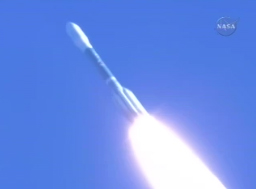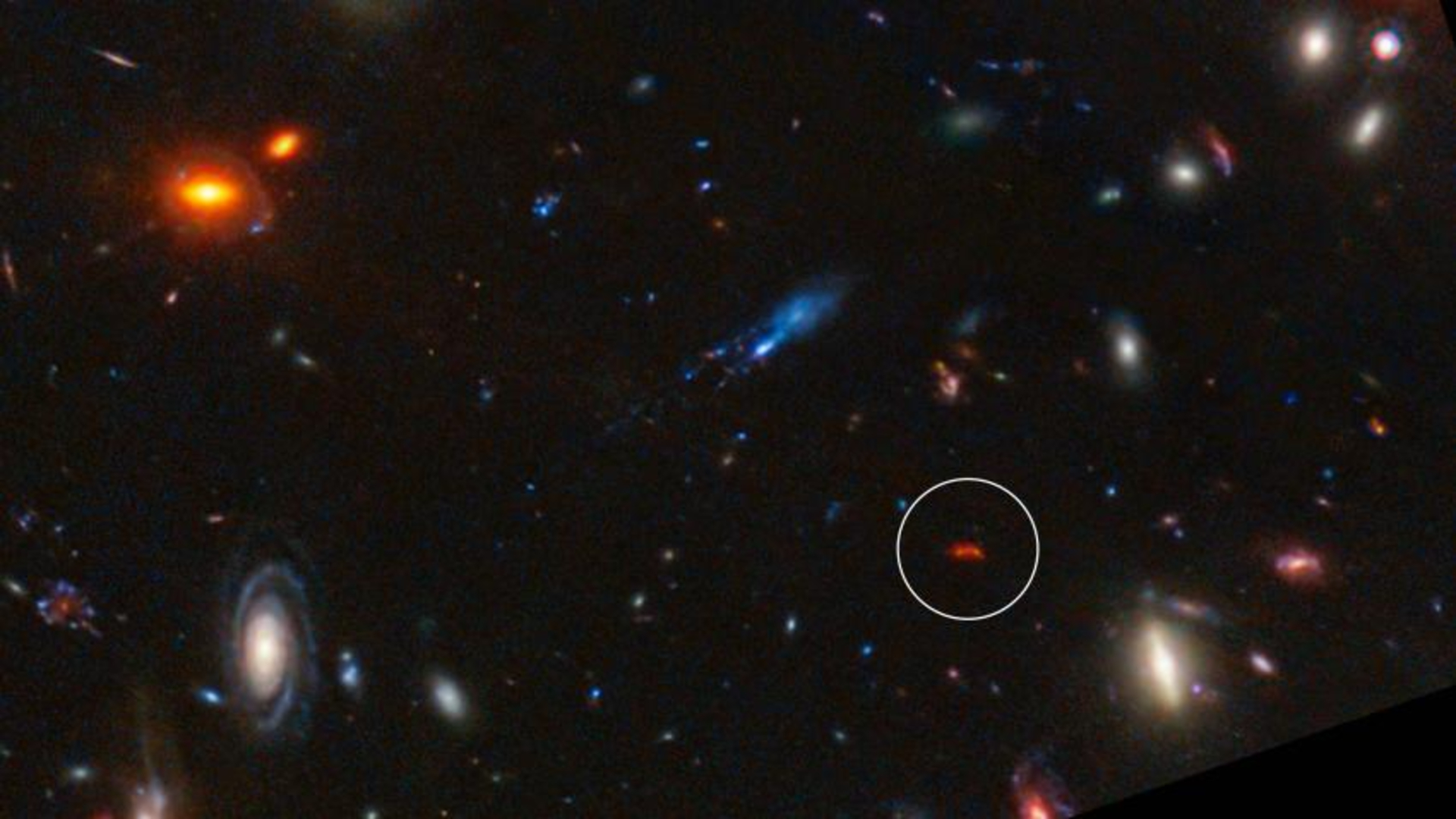NASA Successfully Launches Science Satellite Quintet

Five NASAprobes blasted into space Saturday, kicking off a two-year mission to hunt downthe source of some of Earth's mostcolorful auroral displays.
After twodelayed attempts, a United Launch Alliance Delta 2 rocket successfully hauledthe five THEMISprobes into orbit for NASA from Pad 17B at Florida's Cape CanaveralAir Force Station at 6:01 p.m. EST (2301 GMT) [image].
"It was a very smooth count and it was a verygood payout after yesterday's tough one," NASA launch director ChuckDovale said after the space shot [VIDEOanimation].
Poor weather prevented preparations for a Thursday THEMIS launch, only to be followed by high upperlevel winds that thwarted a Fridaylaunch attempt just minutes before the mission's planned liftoff. But wind concerns didnot afflict today's spaceflight.
"Upper airwinds were not an issue," Dovale said. "The count was very quiet."
THEMIS,short for Time History of Events and Macroscale Interactions During Substorms, marksthe most spacecraft ever launched at one time for the space agency, NASAofficials said.
The mission's first probe - dubbed Probe A - popped free of its carriage about73 minutes after launch as planned, with its four counterparts deploying like flower petals about three seconds later [image].
Breaking space news, the latest updates on rocket launches, skywatching events and more!
Each aboutthe size of a dishwasher, the five 282-pound (128-kilogram) THEMIS probes [image]are nearly identical and designed to track the origin of powerful geomagnetic substormswithin the Earth'smagnetic field [VIDEOmission overview].
Substorms occurwhen charged particles belched from the Suncrash into the Earth's magnetic field, where they are funneled along magneticfield lines to the Earth's North Pole to spur undulating ribbons ofmulti-colored hues in the auroraborealis, also known as the Northern Lights. Without substorms, auroraswould appear as a static sheet of greenish illumination, researchers said.
Bypinpointing substorms, researchers hope to develop a better understanding ofspace weather - such as the high-energy particles produced by the Sun in solar flares - which caninterfere with satellitecommunications and even endangerastronauts flying in Earth orbit. But researchers are still unclear onwhere substorms originate.
"Bytracking those energy releases from one satellite to the other, [THEMIS] willbe able to detect for the first time where those releases emanate," Vassilis Angelopoulos, the mission's principal investigatorat the University of California, Berkeley'sSpace Sciences Laboratory overseeing the mission for NASA, said before today's launch."Really it's an analogous system to what meteorologists use on the ground."
Angelopoulos added that he hopes the THEMISmission will shed new light on predicting space weather in the future. THEMIS drawsits name from the Greek goddess of justice and wisdom.
The $200million THEMIS mission stems from a partnership between UC Berkeley andNASA's Goddard Space Flight Center in Greenbelt, Maryland.
Built by UCBerkeley and Swales Aerospace, the five THEMIS probes are designed to take upstations in ever-higher orbits ranging between one-sixth and half the distancebetween the Earth and Moon [image].Every four days, the probes are expected to align with one another and groundstations on Earth to provide a curtainof sensors to scan for substorm activity for at least two years [image].
- VIDEO: THEMIS Launch Animation
- VIDEO: THEMIS Mission Overview
- VIDEO: Aurora - Dangerous Beauty
- IMAGES: Colorful Auroras
- NASA Primes Five Satellites for Stormy Hunt
- SPACE.com Cams: Real-time Views of the Sun, Earth and Auroras
- Storm Hunt: Spacecraft Quintet to Track Down Magnetic Field Tempests

Tariq is the award-winning Editor-in-Chief of Space.com and joined the team in 2001. He covers human spaceflight, as well as skywatching and entertainment. He became Space.com's Editor-in-Chief in 2019. Before joining Space.com, Tariq was a staff reporter for The Los Angeles Times covering education and city beats in La Habra, Fullerton and Huntington Beach. He's a recipient of the 2022 Harry Kolcum Award for excellence in space reporting and the 2025 Space Pioneer Award from the National Space Society. He is an Eagle Scout and Space Camp alum with journalism degrees from the USC and NYU. You can find Tariq at Space.com and as the co-host to the This Week In Space podcast on the TWiT network. To see his latest project, you can follow Tariq on Twitter @tariqjmalik.
